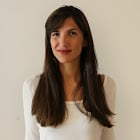In the hospitality industry, transactions are taking place all the time. Whether that be online or in person, there are many ways to pay at a hotel.
This is why, when looking into a hotel payment tool, you want to be sure that you can support your guests with the most flexible options possible so that during every step of the customer journey there is a unique option available.
Allowing guests to have different ways to pay at different phases of the customer journey is key to ensuring conversions no matter what phase of the funnel the transaction is carried out.
In this article, we will look at the different ways to pay that your hotel payment processing tool should support. We’ll delve into more detail about these different payment options and why they’re an important part of ensuring customer satisfaction.
Table of contents
What variety of ways to pay should your hotel payment tool support?
As with any business, there are many ways to pay at a hotel, and having a tool that supports a variety of options is key to providing the best guest experience possible.
It’s about more than just offering a variety of methods, it’s about making payments easy, hassle-free and convenient.
The key of such a tool is to be able to have flexibility throughout the whole customer journey, no matter what point a customer chooses to pay or how they choose to pay.
The process should be instantaneous throughout all touchpoints. Automation software increases productivity and makes a better experience for both guests and your staff.
Now that we’ve understood the importance of a solution that provides flexibility, let’s look one by one at the must-have options that any payment tool should support.
Integrated terminals
Having an integrated terminal is crucial to streamlining your payment process, especially during check-in and check-out. This means that your payment process can be fully linked to a countertop or kiosk terminal.
You will want to make sure that a variety of methods are accepted such as major credit cards or digital wallets including Apple Pay, Google Pay and Samsung Pay.
By choosing the right tool, you may even be able to integrate payments and transactions directly into your payment and operations software. This is ideal for making the operations process as smooth as possible, which plays a fundamental role in guest satisfaction levels.
The smoother the process, the better first impression your guests will have, especially during check-in, which is also one of the first interactions with your brand.
Booking engine payments
Any tool should help facilitate direct bookings. This means that at the time of reservation, you can process the payment directly from the booking tool, making the whole process smooth and easy without having to connect with a third party booking engine.
Being able to process booking engine payments is key to increasing your bottom line through direct bookings by taking out the middleman and limiting unnecessary commissions to third party booking sites.
Being able to accept booking engine payments is crucial during the pre-trip phase, once the guest has decided to book directly on your facility’s website.
You may also like:
- How to book a hotel without using a credit card?
- The hotel payment tools with the biggest variety of payment options?
Front desk payments
Having a countertop terminal during check-in and check-out should be a key offering of your payments solution.
Your front desk is the soul of your hotel and the eyes and ears of your operations, and enabling front desk payments is a great way of ensuring quality of service because it can be managed by a human rather than relying on technology to automate the task for you.
Terminals are perhaps the most common way guests pay, but this is changing all the time thanks to technology advancements in the hospitality sector.
Being able to offer a smooth process upon arrival and departure is fundamental to making a lasting first impression by providing the best service possible. Find out how to optimize your front desk operations.
Kiosk payments
There are many benefits to a self-service kiosk. A kiosk is a great option for a contact-free experience and to make it possible for guests to check in and out at any time of day or night.
Your tool must offer an integration with your kiosk to be able to accept payments through the kiosk. This will also make your front desk’s job easier because they can then focus on interacting with guests instead of processing transactions.
Online check-out payments
Online check-out is great for improving the guest experience and increasing customer satisfaction. This is why it’s important that your solution offers the ability to settle and validate the final bill when the time comes to check out online.
In this way, guests can spend their time in the hotel room or elsewhere rather than waiting in line to check out.
Online check-out is key to improving operational efficiency because it automates manual processes, reduces lines and enhances the overall experience.
By being able to settle the bill and take their time to review it, guests are more at ease and can just turn to the front desk staff should there be questions. This also makes the front desk’s job easier and frees up space in the day to take care of other tasks.
Payment requests
Automation is the name of the game when it comes to sensitive and time-consuming activities like payments. That is why your tool of choice should offer the ability to send requests, either automated or manually. Should they not want to pay at the moment they reserve, you can request the money that they owe before or after they stay.
You can also use these requests to remind guests to pay, or charge a deposit for the booking as well as urge guests to pay the balance due in a set number of days before arrival to ensure reservations, and limit no-shows. Limiting no-shows and ensuring reservations is key to profitability.
Conclusion
In this article we’ve looked at the six main ways to pay that a hotel payment tool should offer, including payment requests, online check-outs, kiosk payments, front desk payments, booking engine payments and integrated terminals.
These are all fundamental offerings that you should look for when choosing the tool that’s right for your property.
The purpose behind offering these different ways to pay is being able to offer a different and preferred payment method during each phase of the customer journey, no matter the path the guest takes to ultimately book a room.
Payments should be automated, avoiding human error and freeing up your front desk staff to provide the best service possible.

Author
Eva Lacalle
Eva has over a decade of international experience in marketing, communication, events and digital marketing. When she's not at work, she's probably surfing, dancing, or exploring the world.

Essential hotel technology for general managers
Download now
Hospitality hot takes straight to your inbox


.webp)